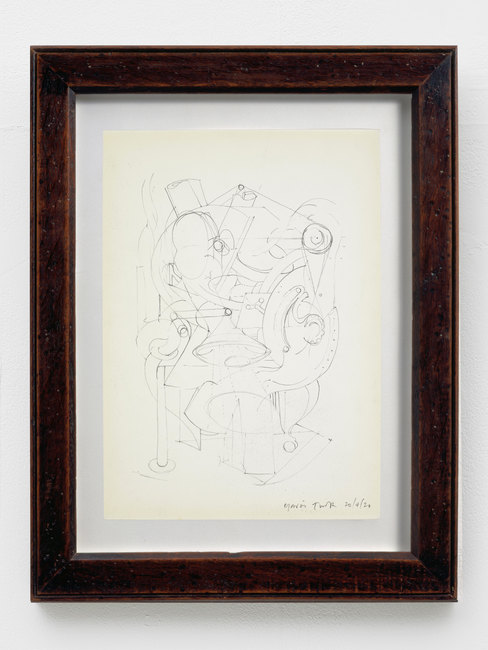AboutEssays2022CAVE DRAWINGS
CAVE DRAWINGS, 2022
During the UK lockdown I made a drawing a day... Abstract, subject-less pencil work where an ‘automatic’ surreal zone appeared on the paper. I looked up the word ‘doodle’ and wondered if it could be helpful to explain the method — ‘A drawing made while a person’s attention is otherwise occupied.’ Umm... there’s something here. However, the process did feel more mindful, like a process of drawing that consciously tried to escape recognition, while still drawing a line or mark that looked ‘right’ or corrected another.
Things like the question of the thickness or size of a line, as well as the status of certain marks, hovered over my shoulder as I drew. I was conscious of the way that the result would inevitably evoke interpretation and meaning. Looking at clouds or smoke the pareidolic mind has the tendency to perceive and to impose a meaningful interpretation on nebulous stuff, seeing faces, animals, and stories in the ether. Marks can be symbolic and belong to a category that’s recognised as a particular meaning or significance. A cross, a star or even a dot can be read as a message. A line might carry an instruction, like an architectural plan or diagram, while its real partner might exist somewhere else in the world.
William Hogarth, in The Analysis of Beauty (1853), set out about his beliefs regarding visual aesthetics, This book mentions the ‘Line of Beauty’, a certain S-shaped line ‘that excited the attention of the viewer and evokes liveliness and movement’. These Cave Drawings, far from being dreamlike depictions of gods or prey scratched into the wall, are more an unavoidable expression of the advantages and disadvantages of having a mark-making instrument in your hand. Scribbles, acratches, squiggles and scrawls — drawing out a drawing.
Plato’s Allegory of the Cave refers to the imprisoned view that perception has of the world describing it, as a series of manipulated shadows on the back wall of the cave. This allegory was modified by Francis Bacon discussing his Idols of the Cave (1620), ‘where everyone has their own special cave or den which scatters and discolours the light of nature, so that the human spirit (as it is allotted to particular individuals) is a variable thing, all muddled, and so to speak a creature of chance.’
So, I invite you now to bring your conscious and unconscious biases, as well as an open mind, to float and engage with the ensuing pages.
GAVIN TURK
